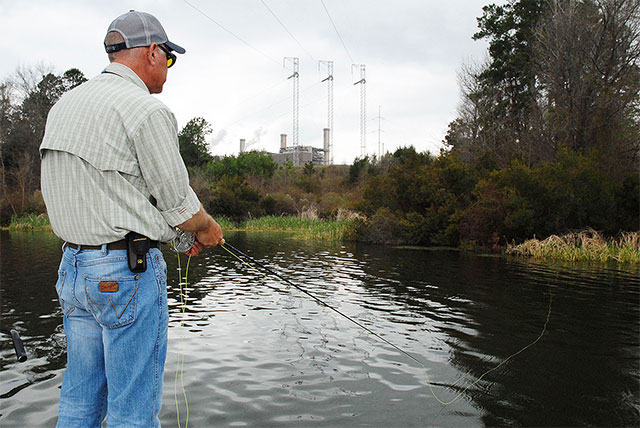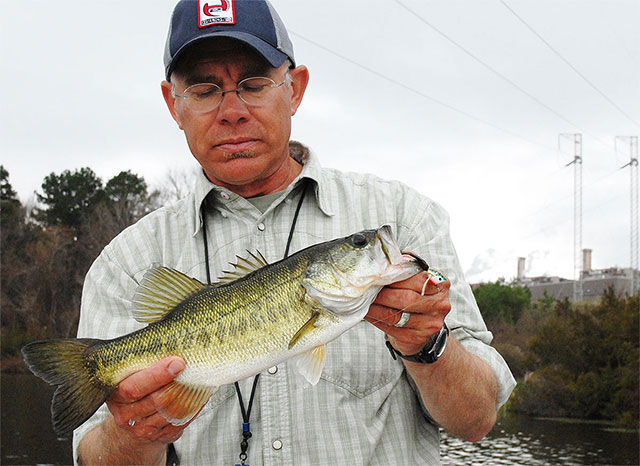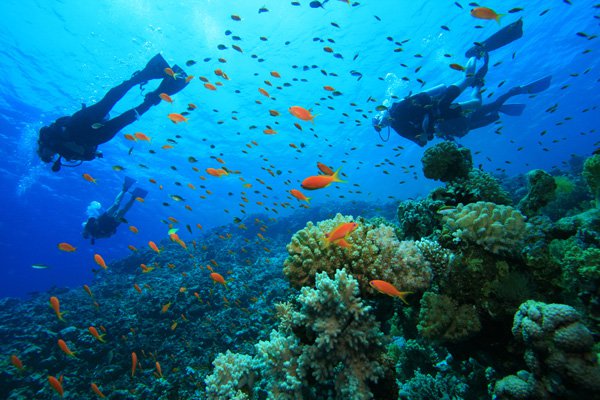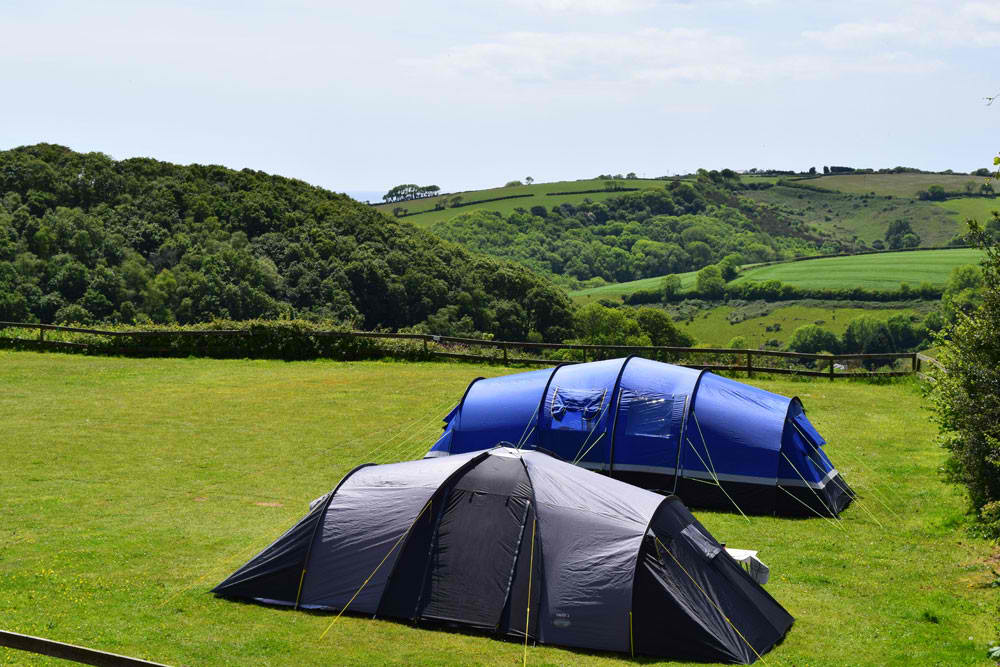
When the mild temperatures of fall finally give way to cold weather, many fly rod bass fishing enthusiasts put their gear away for the winter and resort to tying flies, poking the fire and enjoying a cup of hot morning brew.
But not Rob Woodruff, the East Texas-based fly fishing guide from Quitman (www.flyfishingfork.com; (903) 967-2665).
Because in Woodruff's case, the time of the year when Old Man Winter rolls into town is actually one of the year's best times to rig up the eight-weight fly rod for a day of bass fishing.
With topwater poppers, no less.
Lest you think that the Orvis endorsed fly fishing guide has lost his mind, think again since Woodruff indicates that December, January and February are all prime months for anglers to target bass on Lake Welsh, a 1,269-acre Pineywoods region warmwater power plant lake lying just to the east of Pittsburg.
Impounded back in 1976, the truth is that the water body isn't the trophy bass fishery that it was back in the day – the lake record is a 15.23-pound behemoth caught on December 23, 1983.
But with plenty of 2-, 3- and 4-pound bass eager to pounce on a topwater fly, Woodruff isn't complaining.
“Because of the constant warm water, they have a high metabolism rate and tend to grow really fast and therefore they don’t live quite as long,” said Woodruff, a two-time "Orvis Guide of the Year" finalist.
“In recent years, the biggest fish we’ve been landing have been upwards of 6 pounds. (A couple of winters ago), our biggest fish went just past 6.5 pounds.”
With a mixture of primary and secondary points, an island, cattails, sunken timber, laydown logs, beds of hydrilla, and stands of coontail, there is never a shortage of bass attracting structure and cover to throw a popper at.
How good can the wintertime fishing action be?
Well, during the winter of 2013-14 – when East Texas experienced its coldest winter season in a quarter-century and Welsh's power plant was generating almost daily – the action was tremendous almost every single day according to the guide.
As long as an angler found himself fishing in the preferred locations on Welsh.
“Most years, the warmer water tends to be in the southern half of the lake since the discharge is in about the middle of the lake and the uptake is at the southern end,” said Woodruff, who has fished the lake steadily since 1990.
“But there is some circulation through the lake and (in that winter), there was so much power generation that even the northern half had some warmer water.”
While East Texas occasionally has frigid weather – including snow, sleet and ice – that can make for uncomfortable conditions for anglers, the truth is that on most winter days, low temperatures rarely dip below freezing and highs are typically in the upper 40s and lower 50s.
Combined with much warmer water temperatures, such conditions are tailor made for wintertime popper fishing success according to Woodruff.
How many fish can an angler expect to catch on a winter's day?
“There have been some winters with days where you’d go down the bank and catch a fish on just about every cast,” said Woodruff.
“I don’t know if I’ve ever had a 100-fish day there but we have had several 50-fish days."
Woodruff says that back in 2012, he hit a two-week long stretch where he and his clients fished the small lake on eight different occasions in the February and March timeframe. And during those outings, the average was 36 fish per day with many bass tipping the scales in the three to three and a half-pound range.
"And we rarely threw anything other than poppers," Woodruff said with a smile.
As it might sound like, the veteran East Texas fly guide is something of a popper specialist, keeping a huge box filled with poppers of various shapes, sizes, and faces that are either cupped or flat.

Fly fishing guide Rob Woodruff shows off a nice largemouth bass he caught on a topwater popper.
One thing that the Texas A&M entomology graduate insists on with all of his poppers however is that they have a weedguard.
Why is that? Woodruff says that it's because poppers are best fished around the lake's laydown logs, across the edges and potholes of hydrilla beds, over coontail stands, near the edges and irregularities of cattail stands and near man-made fish attractors.
"You've got to throw these as tight to cover as possible," he said. "If you're not occasionally getting stuck, you're probably not putting the popper into the right spots."
When a popper does find the right spot, Woodruff says to retrieve it back to the boat in a cadence that the fish want. Some days that will be with a faster retrieve, other days it will be with a slower retrieve with ample pauses.
"Keep the rod tip pointed into the water," said Woodruff. "Give the fly a good, solid pop that produces an audible sound. And fish it all the way out towards the boat. Too many people only fish a popper the first five feet away from cover and then rip it back to recast.
"Sometimes, a fish will follow the popper out away from the cover for a good ways before striking."
Interested in some wintertime popper fishing at Welsh?
Woodruff recommends using a fast-action seven- or eight-weight fly rod – his go to rod most days is either a Recon or a nine-foot tip flex Orvis Helios 2. When the wind is calm, he also finds good results with a fast-action saltwater-style six-weight.
As for his reel – typically a large arbor saltwater style like the Orvis Hydros model – he will have a weight-forward bass taper floating line and a 7.5- to 8.5-foot leader that tapers down to a 10- to 12-pound monofilament tippet.
When it comes to the actual poppers themselves, Woodruff most often uses 1/0 size flies – occasionally smaller – that feature rubber legs and to a lesser degree, some form of hackle.
“I think that the hackle is less important than the rubber legs and I’ve got some good popper patterns that don’t have it,” he said. “But I do like to have rubber legs on all my poppers because they are a pretty good enhancement to the fly.
"That can be especially true early and late in the season when fish might not be as active as they will be at other times of the year. You can let a popper sit there and there will still be that slight, quivering motion of the rubber legs in the water that can drive a fish crazy even when the fly is sitting still.”
In terms of popper colors, Woodruff primarily relies on chartreuse, white or frog-green patterns most of the year. If he's fishing in late November, a shad pattern might also find its way into his box along with a black popper for use when low light conditions necessitate a silhouette presentation against the sky.
Do keep in mind that the annual bass spawning cycle is a bit accelerated at Welsh because of the constant warm water: “They will pull up and start spawning on these power plant lakes as early as the full moon around the winter solstice,” said Woodruff. “So the pre-spawn starts most years in late November or early December on Welsh and (nearby Monticello). The spawn itself is usually in mid to late December, January and on into February. And the post-spawn is typically when the pre-spawn is occurring at other area lakes.”
The bottom line for bass anglers is that Welsh is an East Texas fishing gem that offers superb fly fishing at a time of the year when Christmas trees, brightly colored lights and the familiar croon of holiday music is more expected than fast-paced topwater popper action is.
To which Woodruff shrugs and smiles.
“I’d say it (Welsh) probably has the most viable number of days of popper fishing that you can find anywhere in Texas,” he said. “Most years, there are up to six months that you can catch fish on top here.”
And that's good enough fly fishing action for bass that even good old St. Nick himself might stop in and pay Lake Welsh a wintertime visit for a few days in December.
Undoubtedly using an eight-weight fly rod pulled from the back of his gift laden holiday sleigh.
Because at this East Texas bass fishery, the wintertime topwater action can simply be that good.
Make your dream about a wonderful vacation come true



Copyright © www.mycheapnfljerseys.com Outdoor sports All Rights Reserved